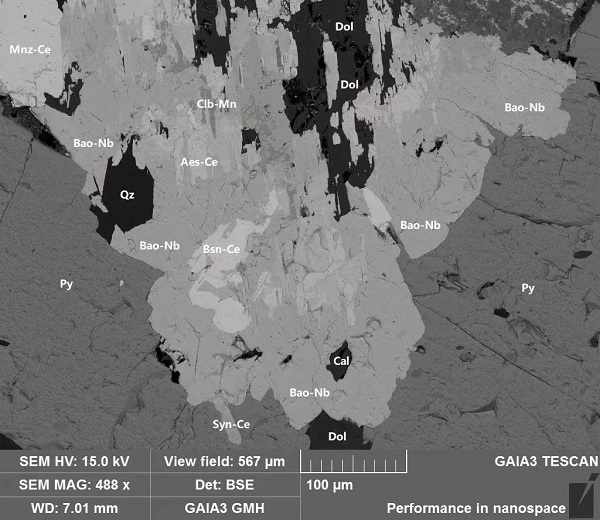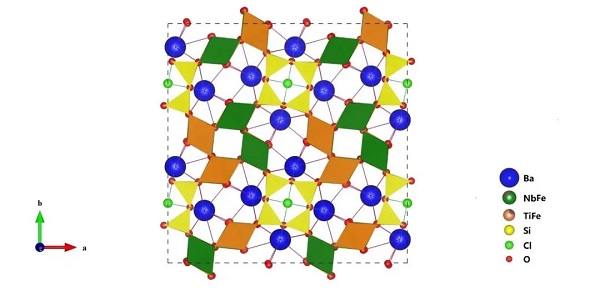On Oct 3rd, the niobobaotite, newly discovered by researchers from Beijing Research Institute of Uranium Geology of CNNC (China National Nuclear Corporation), attained its official approval number (IMA 2022-127a) from IMA CNMNC. This is the 13th newly-discovered mineral since the establishment of China's nuclear geological system 70 years ago, marking another original discovery by the China National Nuclear Corporation (CNNC).
The niobobaotite was found within the niobium-rare earth-iron ore in the Bayan Obo Mining District in Baotou, Inner Mongolia, China. With the color of brown to black and the shapes of columnar or plate, it ranges from subhedral to anhedral crystal. Ranging in size from 20 to 80 micrometers, this mineral is rich in barium (Ba), niobium (Nb), titanium (Ti), iron (Fe), and chlorine (Cl).

The Bayan Obo Mining District boasts more than 150 kinds of minerals, including niobobaotite, the 17th newly discovered mineral. It is a niobium-rich analog of the baotite unearthed in the 1960s. The discovery helps to resolve the international debate on the electron valence balance of baotite and provides a theoretical foundation for the study of niobobaotite. The discovery of the niobium-rich niobobaotite expands the variety of niobium ore in this mineral deposit, offers a new perspective for researching the forming mechanisms of niobium ore, and opens up a new direction for the development of critical metals such as niobium.

The discovery and study of new minerals are important to the exploration of unknown phenomena in nature. The Beijing Research Institute of Uranium Geology of CNNC, leveraging its leading role in technological innovation, has established a system for mineral research and made continuous breakthroughs in the field of mineral research. It has successfully led the discovery of 11 new minerals.